Diary of a ‘Luna’tic
Adil Mulki embarked on a quest to find Pakistan’s ‘lost’ moon rock.
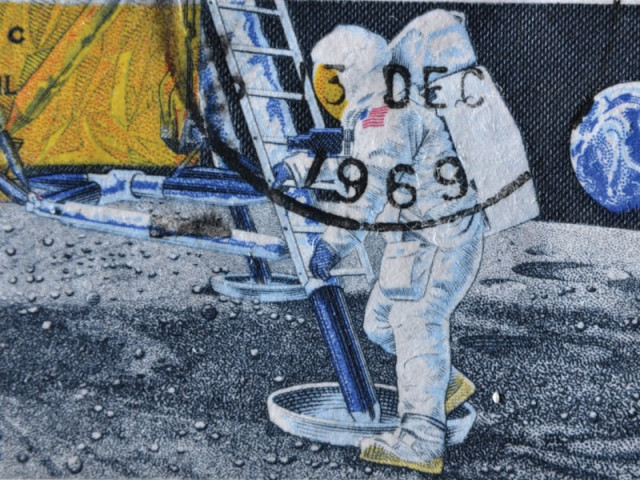
Diary of a ‘Luna’tic
The moon has captivated man’s imagination since prehistoric times but it was only as recently as the 20th century that technology finally enabled man to take practical steps towards reaching this celestial body. The American space agency Nasa ran its Apollo programme of manned and un-manned space missions during the 1960s and 1970s while the Soviets ran their own Luna programme. Eventually, on July 20, 1969, these steps culminated into a “giant leap for mankind” — in the words of the legendary astronaut Neil Armstrong — and a lunar module named “Eagle” from Nasa’s Apollo 11 mission carried Armstrong and his colleague Buzz Aldrin to the moon. The collective sigh of relief from mission control was probably audible as far as the moon and the achievement became the beginning of man’s subsequent trips to the moon, and the moon’s reciprocal trip to earth, Pakistan and finally to me!
Nasa’s Apollo missions resulted in extending the limits of not only science but also culture as we know it. Frank Sinatra’s memorable “Take me to the moon” deservedly became the first song to be played on the moon itself, and the US used the opportunity for some masterful diplomacy. The last of the missions was Apollo 17 which was carried out between December 7 and 19, 1972. Eugene Cernan was the commander of the mission, Ronald Evans the command module pilot and professional geologist Harrison Schmitt was the lunar module pilot. The mission successfully gathered important scientific data as well as a quantity of surface samples. And here, the moon came a step closer to Pakistan.
The Apollo 17 astronauts toured many countries in order to spread the word about the missions. Pakistan, then a much more “allied” ally of the United States, was on their itinerary as well. They arrived in Karachi on June 17, 1973, and the nation welcomed them with aplomb. Everywhere they went, earthlings from Pakistan treated them not just as royalty but as if they were aliens (in a good way). During their whirlwind tour they visited the Quaid’s mausoleum and laid a wreath there in a formal ceremony. From the “first” first lady of Pakistan, the late Begum Rana Liaquat Ali Khan who was then the Governor of Sindh, to the then acting chief minister of Sindh Qaim Ali Shah (yes, the same person who is now the CM), leaders from all sides of the political equator welcomed them.
In the US, the politicians had decided to use the trip as a token of goodwill for the human race and share a piece of the moon with many states of the world. Pakistan was one of them and when the astronauts met Zulfikar Ali Bhutto, then the president of Pakistan, they presented to him a lunar sample from the moon’s surface for Pakistan.
It was not just the politicians and leaders that the “men from the moon” met. The astronauts met Suparco researchers and scientists as the two space agencies had been working together since 1961 and had even conducted joint rocket launches from Pakistan. Some of Suparco’s founding fathers had even received training from Nasa.
The men were treated like national heroes. Their interviews were broadcast by Radio Pakistan and Pakistan Television. No less an anchor than Laiq Ahmed, believed to be the Larry King of Pakistan, conducted the PTV session. As they had visited in safer times, they also held informal Q&A sessions and interactions with students and ordinary Pakistanis and some old-timers recall how they, as young students, had enjoyed the team’s visit to the Karachi University. Such was their commitment to reaching out that when a young man from Karachi named Tariq Moen Shaikh wrote them a letter, they responded to it with an autographed picture as a memento. Speaking about their mission and related experiences, Commander Cernan once said: “We went to explore the moon, and in fact discovered the earth.”
The first time that I came to know that the ‘Pakistani’ moon rock existed was in 2009 when reports started circulating in the international media that a number of moon rock samples presented to various states around the world, including Pakistan, were in fact lost due to conflict, wars or plain incompetence. The Pakistani press also lent credence to these reports. The “news” items disturbed me and I made a few attempts to trace the rock by speaking to my contacts from Islamabad and in Suparco, etc, but to no avail.
I went on to question older family members and they said they knew of it — my uncle had seen it with his college mates when it was displayed at Karachi’s Frere Hall decades ago — but had no idea what had happened since.
Disappointed by people’s apparent indifference to the loss of such an invaluable memento, I went back to my life and job. Little did I know that that would be the best decision I would make in my search for Pakistan’s piece of the moon and, following the news of Armstrong’s demise, I decided I absolutely had to find the memento or at least figure out what had become of it.
As a banker, I often visit the State Bank of Pakistan and during one such visit, oblivious to how fortuitous it would turn out to be, I took a walk through the brilliant museum that is located in the banking regulator’s building. Inspired by all the history housed there, I got in touch with Asma Ibrahim, director of the SBP’s museum and art gallery. She had been instrumental in solving another mystery from history, that of the “Persian Mummy”, over a decade ago and I decided to seek her assistance in this endeavour too. She assured me that the rock was very much in safe custody. And that wasn’t it; she even knew where it was: the reserve collection at the National Museum of Pakistan, Karachi — out of public sight.
I waited impatiently for a Sunday when I would finally get the chance to go see Muhammad Shah Bukhari, the museum’s in-charge, who upon my request promptly arranged for a viewing and photography session of the rock. It was as if the entire state machinery had been guarding that incredible piece of history, almost waiting for someone to come looking for it.
More nervous than I had been during all my job interviews, I waited for the artefact to be brought into the curator’s office. An officer walked in, carrying a wooden panel and an affixed glass sphere, which looked much like a mundane paper weight, immediately grabbed my attention. Embedded in the glass was a piece of dark rock — my own private mini holy grail of sorts! I was over the moon, or at least face-to-face with a tiny fragment of it, and as the initial awe subsided, I studied the other objects fixed on the wooden panel. An inscription on a metal plate beneath the rock read: “This fragment is a portion of a rock from the Taurus Littrow Valley of the moon. It is given as a symbol of the unity of human endeavour and carries with it the hope of the American people for a world at peace.”
Beneath the inscription was a small Pakistani flag, which I thought was there only because the panel was presented to Pakistan. But the biggest surprise for me came when I read another inscription on the metal plate beneath the flag: “This flag of your nation was carried to the moon aboard the Spacecraft America during the Apollo XVII mission, December 7-19, 1972. Presented to the people of the Islamic Republic of Pakistan from the people of the United States of America. Richard Nixon 1973”.
A Pakistani flag that had been to the moon and back, and I had never even known about it! The country that never agrees on a single moon-sighting for Eid had had its flag carried to the moon and has a piece of the lunar surface safely tucked away as something so precious should be.
Neil Armstrong, the first human being to set foot on the moon, has permanently ended his stay on this third rock from the sun. We may have lost him, but it is a heartening feeling that the Pakistani moon rock has not been lost.
Published in The Express Tribune, Sunday Magazine, September 16th, 2012.
Like Express Tribune Magazine on Facebook and follow at @ETribuneMag

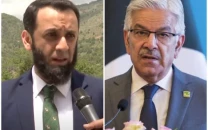
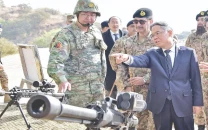

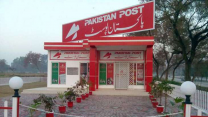
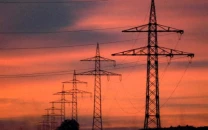













COMMENTS
Comments are moderated and generally will be posted if they are on-topic and not abusive.
For more information, please see our Comments FAQ